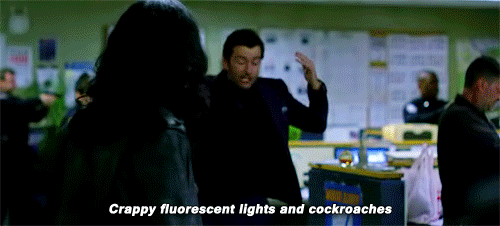- Gender representations in East Asian advertising: Hong Kong, Japan, and South Korea (Peer Reviewed)
Prieler, Michael, Ivanov, Alex, and Shigeru Hagiwara. “Gender Representations in East Asian Advertising: Hong Kong, Japan, and South Korea.” Communication & Society, vol. 28, no. 1, 2015. Research Library, ProQuest, doi:10.15581/003.28.1.27-41.
As suggested by the title, this source concerns mainly around the differences between female and male representations in approximately 1,694 television advertisements, as stated by the authors, from Hong Kong, Japan, and South Korea. However, rather than simply focusing on observable characteristics such as age difference between males and females on average, clothing, beauty appeal, etc. of each advertisement, this source goes into a more in-depth analysis of possible reasons these differences exist and how they came to be. It looks into the Confucian past of the geographical region and how the several ideologies that had separated the genders physically and socially continue to play a role in modern television. In addition, the source also demonstrates relationships between the degree of gender stereotyping in each nation’s advertising and some common gender indices, such as Project Globe’s Gender Egalitarianism Index, Gender-Related Development Index, Hofstede’s Masculinity Index, etc. Overall, I found this source very effective in not only determining many of the ways in which each gender is represented in a part of the Eastern Asian region and how they differ from themselves, but also in explaining these differences through deeper analysis into the past culture and use of popular statistical indices.
- Melanin on the Margins: Advertising and the Cultural Politics of Fair/Light/White Beauty in India (Peer Reviewed)
Parameswaran, Radhika, and Kavitha Cardoza. “Melanin on the Margins: Advertising and the Cultural Politics of Fair/Light/White Beauty in India.” Research Library, ProQuest, 2009, search.proquest.com/pqrl/docview/220814710/2623F0A5B15C46EDPQ/1?accountid=11107.
Although this source does not directly talk about gender representation in Indian advertisements, it focuses on a significant underlying concern that plays a large role in many female representations in modern Indian advertisements: the social pressure for women to invest in “fairness cosmetics”, as the authors phrase it. This, in turn, explains why such a large percentage of Indian women’s representation in advertisements revolves around the cosmetics sector over any other areas. Many of the companies involved in cosmetics and beauty products essentially take advantage of this insecurity of skin color derived from colorism’s influence in castes, ethnicities and other aspects of the social landscape of the past, along with rapid economical growth and escalating lifestyle consumerism of the present. Although it was a very complex read, I found this article very interesting and valuable, especially its analysis of the persuasive narratives of commercials for fairness cosmetic products to encourage greater sales, including their choices of advertisements and women’s purpose and representation in them. I also found it interesting how the authors also dissected several advertisements’ linguistic methods of persuasion rather than just visual, such as incorporating modern and traditional science and even some of the past heteronormative ideals.
- Chinese Advertising Practitioners’ Conceptualisation of Gender Representation
Shao, Yun, Desmarias, Fabrice, and C. Kay Weaver. “Chinese Advertising Practitioners’ Conceptualisation of Gender Representation.” International Journal of Advertising, vol. 33, no. 2, 7 Jan. 2015, pp. 329–350., doi:10.2501/ija-33-2-329-350.
As stated by the source itself, this source analyzes how Chinese advertising practitioners’ social and cultural perceptions of gender relations influence the types of advertisements and gender representations within them that they help create. In a sense, this source digs deep in the psychological aspects behind each Chinese advertisement’s development, specifically the aspects that help explain the differences in gender representation in many advertisements such as stereotypical depictions of women’s shopping behaviors, use of certain products, lack of women in major roles, etc. However, rather than examining multiple Chinese advertisements and dissecting each to explain differences in gender representations, this source instead examines multiple interviews with creative directors, copywriters, art directors and other staff members of China’s advertising industry to further gauge at their psychological thought process behind the development of some of their advertisements and justifications of gender relations within each. I found this aspect of this source very interesting and informative, along with how this source also lists some of western and other global influences in terms of social, professional and even cultural attributes in advertisements as guides used by many members of the Chinese advertising industry.
- Asian-Americans: Television Advertising and the “Model Minority” Stereotype (Peer-Reviewed)
Taylor, Charles R., and Barbara B. Stern. “Asian-Americans: Television Advertising and the ‘Model Minority’ Stereotype.” Research Library, ProQuest, 1997, search.proquest.com/pqrl/docview/236497795/8CF085648FCE48C9PQ/4?accountid=11107.
Despite focusing primarily on social and gender representation of Asian-Americans in US advertisements, this source points out a similar trend to that of the first source: Asian women are rarely depicted in major roles and, in most advertisements, appear under the shadow of Asian males, even though both genders are slightly overrepresented based on their population. In a sense, this source delves into the observation that even within a minority group usually described here as affluent, high in education and partake strict work ethic, there still exists some unequal gender representations in advertisements. In addition to that, Asian women, whether in advertisements or the ones viewing them, also have to contend with similar stereotype experienced by their male counterparts of being portrayed as overly concerned with aspects mentioned above, more so that other aspects of their lives seldom appear in television advertising. Although it was rather short for the amount of depth it covered, I found this article to be valuable in the sense that it analyzed gender and social portrayals of a minority group in US television and explained how over-representing some positive aspects eventually forms a stereotype for the minority group to deal with.
- This Amazing Hair Commercial Portrays Gender Labels Effectively
Tulshyan, Ruchika. “This Amazing Hair Commercial Portrays Gender Labels Effectively.” Forbes, Forbes Magazine, 6 Dec. 2013, www.forbes.com/sites/ruchikatulshyan/2013/12/06/this-amazing-hair-commercial-portrays-sexist-labels/#1ebc4ba48cfb.
This source analyzes a hair commercial from Philippines as “Simple. To the point. Effective”, to say the least. The commercial begins with a man leading a meeting with the word “Boss” behind him and a woman in another room with “Bossy” behind her, followed by each one performing identical actions but with different labels, such as “Persuasive” for man and “Pushy” for woman, and so on. It ends with the words: “Don’t let labels hold you back. Be strong and shine.” I found this source’s analysis of this advertisement very interesting and informative at the same time, especially when it focuses on the fact that even though the advertisement was only for a shampoo company, it can be applied universally for the message it delivers of women’s increasing prevalence in the workforce and yet their continued battle against societal traditions to get the office and even during their work. I also found it interesting when the source explained that that advertisement still succeeds in convincing consumers to buy the product since, rather than focusing on “selling the product”, it instead appeals to their values and emotions and allows them to make informed choices after weighing multiple options.
- 6 Indian Ads that Broke Gender Stereotypes Over the Years
“6 Indian Ads That Broke Gender Stereotypes over the Years – #Breakingstereotypes.” The Economic Times, 8 Mar. 2017, economictimes.indiatimes.com/slideshows/advertising-marketing/6-indian-ads-that-broke-gender-stereotypes-over-the-years/airtel-boss/slideshow/57538927.cms.
This source, unlike the others, includes some visuals of six Indian television advertisements in addition to a brief description of the events that occur in each advertisement. It then explains how each advertisement is helping “break gender stereotypes” in not only Indian television, but the society as a whole through the messages each advertisement delivers. I share the same view as the writers of the web source about many of the advertisements the source mentions, having lived in India for ten years myself: they particularly effective in helping achieve the goal of breaking gender stereotypes. The first advertisement features a couple sitting at a registrar’s office, with the husband announcing that he will be taking his wife’s last name; a brief scene that displays a large shift from the cultural norm in a densely populated country. Other advertisements display similar shifts from the social norms of the past, such as a female executive leader of a company who handles her work till late in the evening, then comes back home to prepare food for her husband who is still at his workplace, and many more. Although descriptions for many of the advertisements were short, each one was well chosen.










